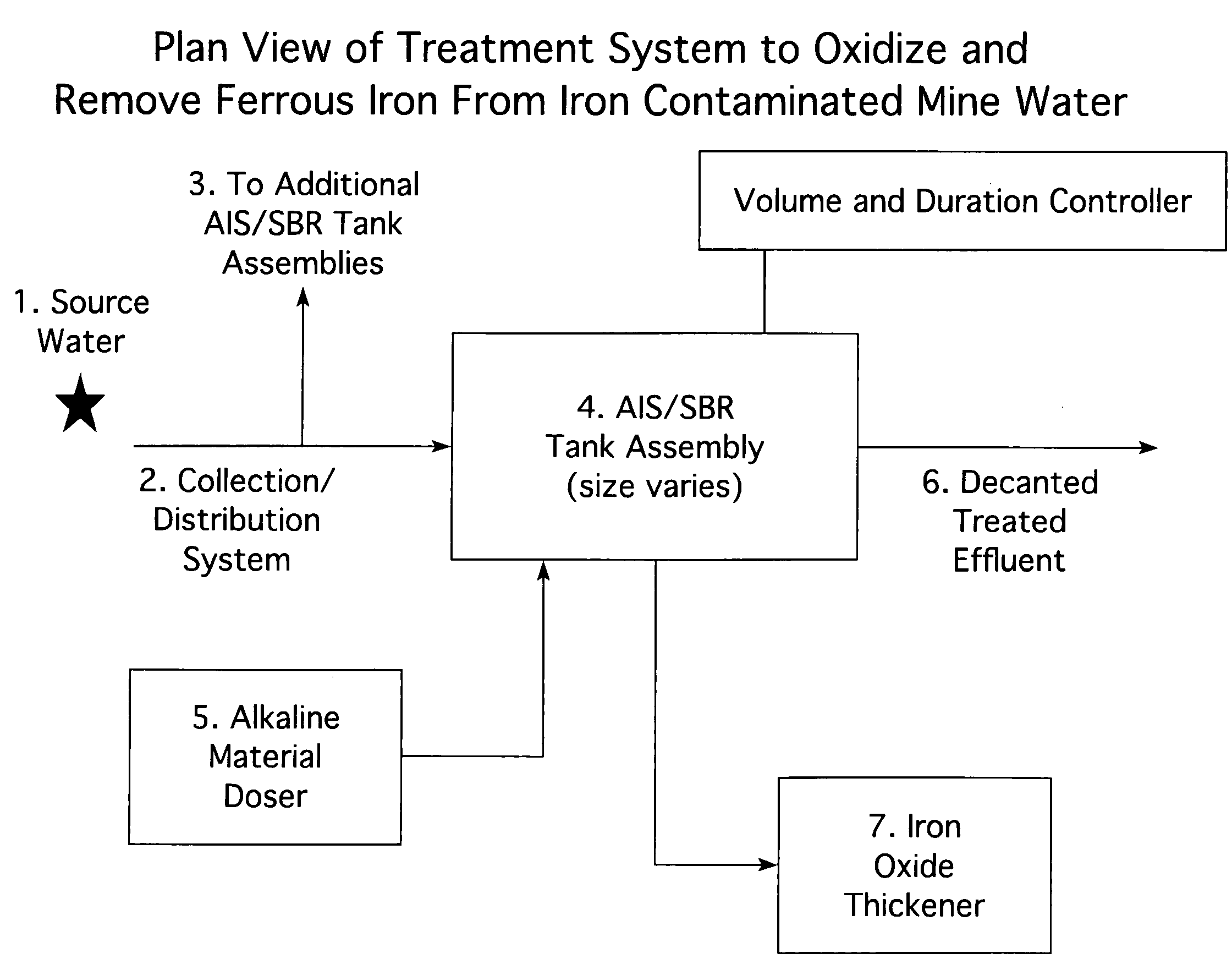Treatment of iron contaminated liquids with an activated iron solids (AIS) process
a technology of activated iron solids and liquid treatment, which is applied in the direction of other chemical processes, separation processes, waste water treatment from quaries, etc., can solve the problems of high cost of mine drainage treatment, impact on social, recreational and commercial uses, and frequent and costly maintenance. , to achieve the effect of higher oxidation ra
- Summary
- Abstract
- Description
- Claims
- Application Information
AI Technical Summary
Benefits of technology
Problems solved by technology
Method used
Image
Examples
Embodiment Construction
[0022]As used herein, the term “heterogeneous reaction” is defined as a reaction involving two or more phases, i.e., solid, liquid and / or gas. In the case of heterogeneous iron oxidation, the reaction involves a ferrous iron solution and an iron oxide solid where ferrous iron is sorbed from the solution and oxidized on iron oxide at the solid / solution interface. See, Sung, W. and J. J. Morgan, “Kinetics and product of ferrous iron oxygenation in aqueous systems”, Environ. Sci. &Tech. 14(5): 561-567 (1980).
[0023]FIG. 1 is a plan view of the treatment system. An iron-contaminated water source (1) is directed into a least one AIS tank assembly (4) or more preferably a plurality of AIS container assemblies. The means of directing the iron-contaminated water into at least one AIS tank assembly may be by gravitational force or by pumping the iron-contaminated liquid into the AIS tank assembly. When a plurality of AIS container assemblies are used in the treatment of iron-contaminated wate...
PUM
| Property | Measurement | Unit |
|---|---|---|
| concentrations | aaaaa | aaaaa |
| pH | aaaaa | aaaaa |
| pH | aaaaa | aaaaa |
Abstract
Description
Claims
Application Information
 Login to View More
Login to View More - R&D
- Intellectual Property
- Life Sciences
- Materials
- Tech Scout
- Unparalleled Data Quality
- Higher Quality Content
- 60% Fewer Hallucinations
Browse by: Latest US Patents, China's latest patents, Technical Efficacy Thesaurus, Application Domain, Technology Topic, Popular Technical Reports.
© 2025 PatSnap. All rights reserved.Legal|Privacy policy|Modern Slavery Act Transparency Statement|Sitemap|About US| Contact US: help@patsnap.com



